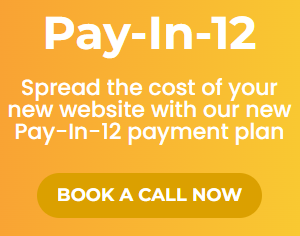Blog posts on your website are one of the most important (in our opinion THE most important) factors in organic SEO. By adding permanent content to your website you are providing more data that Google can serve up to people who are searching right now.
Having more content helps Google understand your business and services, and increases Google’s trust in your website as an authority within your niche. Which has a direct effect on organic SEO and climbing up the SERPS.
Download this tutorial for later
Step 1 – Access your WordPress Dashboard
First access your WordPress dashboard. You can normally find it by adding “/wp-admin/” at the end of your websites url, for example: https://YOURWEBSITE.com/wp-admin/
Once on your WordPress dashboard, it should look similar to this:
Step 2 – Hover over ‘Posts’ then click ‘Add New’
In the left menu hover over ‘Posts’ then left click ‘Add New’ this will bring us to the new WordPress post editor
Step 4 – Enter the title of your new blog post
By default, you should be able to start typing the title of your new blog post immediately when you are presented with this page. If not, simply click the title area and begin typing. In our example, we have entered ‘Example Post Title’
Step 5 – Start writing your blog
Your blog post editor is laid out in blocks. Each paragraph is essentially its own ‘Block’
To start writing your blog, simply use the block editor like you would a standard document editor like Microsoft Word.
Step 6 – Making headings
When you wish to turn a paragraph block into a Heading. Select the block you wish to change by left clicking anywhere within the block. In the menu that appears above your selected block click the ¶ symbol, under ‘Transform to’ click ‘Heading’
Avoid using multiple H1 tags
The title of your blog is a H1 heading by default. For headings within your document we recommend using H2, H3 and sometimes H4 headings. Multiple H1 headings can confuse robots (like google) who visit your website.
Step 7 – Adding Images & Other blocks
The easiest way to add an image (or other block) to your blog post is to press ‘Enter’ on your keyboard on the paragraph above where you want your image to go, like you would to create a new paragraph. Instead of typing, click the black and and white ‘+’ symbol on the right. Select ‘Image’ and follow the prompts.
If ‘Image’ is not available, either search for the block you want in the search box, or click browse all. There are a lot of great options here for you to experiment with.
Step 8 – Removing unwanted blocks
If you create a block by accident or want to remove one, click on the vertical ellipsis ( ⋮ symbol) to bring up the more settings menu. At the bottom of this menu you can click ‘Remove Block’
Step 9 – Post your Blog or Save Draft
Whilst you COULD publish right now, we recommend completing the rest of the steps prior to publication
When you’re happy with your new blog post you have a couple of options. You can post it immediately by clicking ‘Publish’ or click ‘Save draft’ to keep working on your blog post later. Alternatively, you can click ‘Preview’ to see what your blog will look like prior to publishing.
Step 10 – Meta Data
One of the most important things to do prior to publishing is to fill out your blog posts meta data. To do this click the ‘Post’ tab in the right hand slide out settings menu (which can be shown or hidden by clicking the cog button at the top right of the page) Go through each item here and make sure it is filled out, or if you don’t know what it means, leave it.
The main items you should make sure have data are:
- Categories – Add your blog post to a category (or multiple categories) for example “How to guides” and “Wordpress Tutorials” if a relevant category doesn’t exist, make one by clicking ‘Add new category’
- Tags – We recommend entering between 5 and 20 tags to your post. These are essentially hashtags and can help robots and people find your post easier.
- Featured Image – Anything is better than nothing. The featured image is used in various areas of your website.
- Excerpt – Simply copy paste an excerpt from your post that highlights a poignant or engaging point in your post.
Step 11 – Internal & external links
If you have referred to a page or blog in your website, or information on another website you should highlight the text associated with the referral and click the chain link symbol. Creating a link to that page. Internal and External links are an important part of any blog and help increase Google’s trust in your website, thus directly contributing to SEO.
Step 12 – Sharing
Once you have published your blog don’t forget to share your creation amongst your socials! Whilst this might seem like an optional step, there is actually more to it and it is more important than you might think.
Backlinks are one of the most important factors affecting your website’s SEO. Everytime you post to your socials with a link back to your website you are increasing your website’s authority within your business niche and thus your rank within the SERP’s. Slowly but surely, these links add up.
Wandering Webmasters Social Marketing Dashboard can help you schedule out posts and post to all your socials at once.
Congratulations!
You have just made your first well rounded blog post!
If you run into any issues, need some help or are interested in outsourcing blog writing contact Wandering Webmaster for a free estimate! We’re here to help any time.



